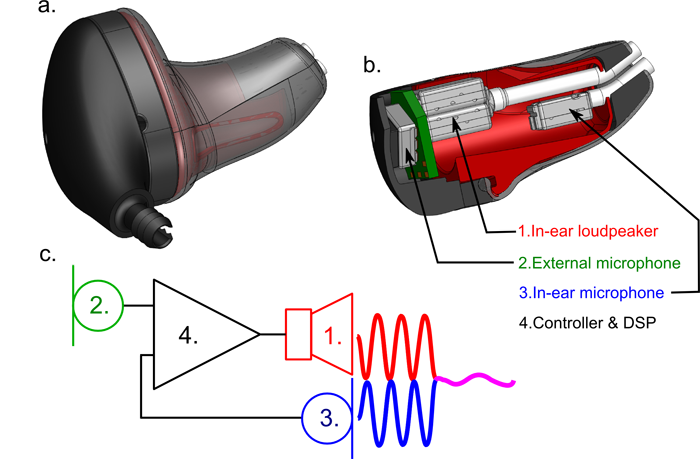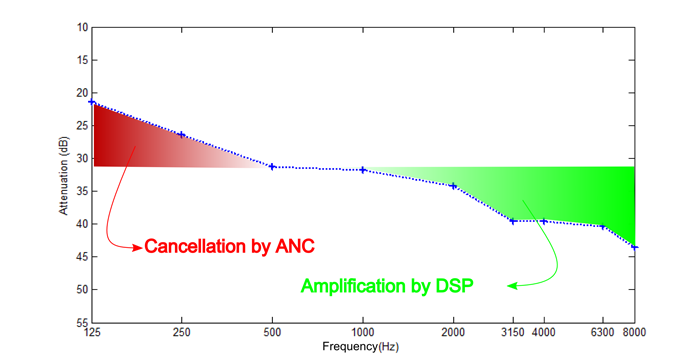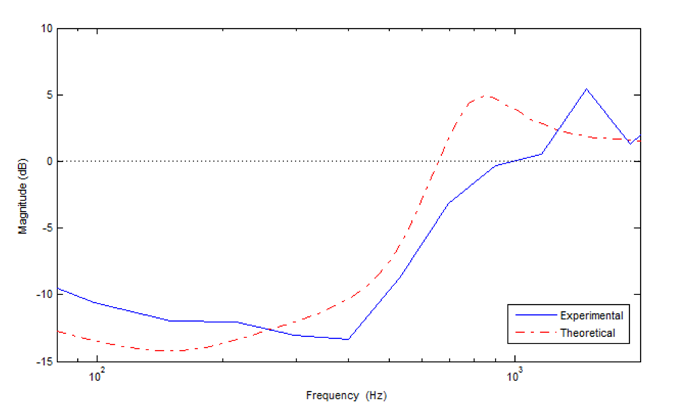
Antoine Bernier, Master student –antoine.bernier@ens.etsmtl.ca
Jérémie Voix, Professor
École de technologie supérieure
Montreal, Qc, Canada
Musicians all too often neglect to protect their most valuable assets!
Studies [1][2][3] show that musicians seldom use hearing protection despite being exposed to harmful sound levels on a daily basis. Meanwhile, audiological examination of professional orchestra musicians show signs of permanent and irreversible noise induced hearing loss in 25% [4] to about 50% [5] of cases. Noise-induced hearing loss does not distinguish between genres of music; as a consequence of overexposure to sound, famous artists such as Eric Clapton, Ozzy Osbourne, Pete Townshend, and Neil Young have reported suffering from hearing loss, tinnitus or both.
Why are musicians reluctant to use current hearing protectors?
Two major reasons why musicians choose not to wear hearing protection devices, even those specifically designed for musicians [2] is that current devices 1) modify the musicians’ perception of their own instrument and 2) prevent them from perceiving timbre, nuances and dynamics. These two aspects can be associated to the occlusion effect and isolation effect respectively.
The occlusion effect causes an unnaturally “boomy” [6] or increased perception of one’s own instrument, be it the voice or the instrument coupled to the head (e.g. singers, brass and wind instrumentists, and violinists). This is because low frequencies produced by the instrument or vocal tract will hardly travel by air in the occluded ear canal and rather travel directly to the auditory system by bone conduction. The occlusion effect can be experienced by the reader by plugging his ears and humming or speaking.
The isolation effect is an unnatural sense of being isolated from surrounding sounds. One must take into account that typical passive hearing protectors do not attenuate the entire auditory spectrum evenly, attenuating high frequencies more than low frequencies. As well, occluding the ear canal shifts its natural resonance to higher frequencies [7], further altering the wearer’s perception.
While passive and active solutions to these problems exist, they use predetermined attenuation settings that either insufficiently or overly attenuate sound. Furthermore, the auditory system perceives loudness in a nonlinear way. Therefore, the frequency content of the same sound at different levels will be perceived differently. For example, when turning down the volume, less bass and highs will be heard compared to mid frequencies.
Active earplug solution to reduce occlusion and isolation effects
Addressing the occlusion effect
The system developed to address the occlusion effect is based on active noise control (ANC). ANC consists in cancelling a given sound wave by sending an opposite wave (a.k.a. anti-sound). As pressure from a sound wave pushes and pulls air, the anti-sound wave pulls air during pushes and vice versa, always summing to equilibrium to effectively cancel the sound. Low frequencies are easier to cancel, because the pressure change occurs more slowly, and the ANC system has time to react. Since the sound wave responsible for occlusion effect is mainly composed of low frequencies, active noise control is a viable approach. To apply active noise control to occlusion effect reduction, an in-ear microphone (3) is needed to pick up the sound that is to be cancelled. A controller (4) then quickly processes that sound into a suitable anti-sound, and an in-ear loudspeaker (1) emits the anti-sound wave into the ear canal. An overview of the earpiece can be seen in Figure 1.

Figure 1: Overview of the earpiece: a.) Inflatable platform to interface with the ear canal. b.) Its electro acoustical components. c.) Equivalent schematic of the earpiece, showing the principle of canceling a sound with an anti-sound.
Addressing the isolation effect
The isolation effect compensation system uses signal processing to transform the incoming sound before it is sent to the ear canal, pre-compensating for the expected perception shift. An external microphone (3) captures the incoming sound, which is then digitized and processed by a high quality digital signal processor (DSP), and sent to the eardrum via an in-ear loudspeaker. The architecture of Figure 1 permits variable attenuation and is suitable for any musical surroundings. To account for the uneven attenuation of passive hearing protectors, high frequencies are amplified by the DSP, while low frequencies can be partly canceled by the occlusion reduction system, as illustrated in Figure 2. To account for the shift of the ear canal resonance caused by its occlusion, the DSP creates a dip where the peak of the mean occluded ear resonance is known to be and a peak where the missing unoccluded ear canal resonance should be. To account for the nonlinear loudness perception of the auditory system, the DSP uses equations derived from loudness perception models [8] to filter the signal so that the perceived frequency content is not modified even if the sound is attenuated.

Figure 2: Example of achieving uniform attenuation of 32 dB using active noise control below 500 Hz and amplification by DSP above 1000 Hz.
Already promising results
The occlusion effect reduction system has been designed and implemented. The results obtained were close to those projected by design, that is, a decrease of over 10 dB for the relevant low frequencies 100 Hz to 500Hz, as shown in Figure 3. Slight regeneration inevitably occurs as a side effect of the active noise control, but is not problematic since the occlusion effect does not significantly affect those frequencies. The isolation effect compensation system has been designed but is still in the implementation phase at the time of writing.

Figure 3: Occlusion effect cancellation: the dashed line shows the expected occlusion effect reduction from theory and design. The solid line shows the achieved occlusion effect cancellation.
Conclusion: New digital technology to help save musicians’ hearing in near future
Musicians must strive to protect their hearing, yet the drawbacks of wearing hearing protection might be discouraging since the occlusion effect and isolation effect might alter the auditory perception on which they rely and jeopardize their performance. In this project, solutions to both effects have been presented through a complete system architecture capable of compensating for these effects. Results thus far are promising.
References[1] Patel, J. (2008) Musician's Hearing Protection-A Review. Norwich, UK: The health and safety executive/HMSO;
[2] Huttunen, K. H., Sivonen, V. P., & Pöykkö, V. T. (2011). Symphony orchestra musicians’ use of hearing protection and attenuation of custom-made hearing protectors as measured with two different real-ear attenuation at threshold methods. Noise & Health, 13(51), 176–188.
[3] Santoni, C. B., & Fiorini, A. C. (2013). Pop-rock musicians: assessment of their satisfaction provided by hearing protectors. Brazilian journal of otorhinolaryngology, 76(4), 454–61.
[4] Eaton, S., & Gillis, H. (2002). Review of orchestra musicians’ hearing loss risks. Canadian Acoustics, 30(2), 5–12.
[5] Royster, J. D. (1991). Sound exposures and hearing thresholds of symphony orchestra musicians. The Journal of the Acoustical Society of America, 89(6), 2793.
[6] Killion, M. C. (1988). The “Hollow” Voice Occlusion Effect. Proceedings of 13th Danavox Symposium (pp. 231–241). Copenhagen.
[7] Stenfelt, S., Hato, N., & Goode, R. L. (2002). Factors contributing to bone conduction: The middle ear. The Journal of the Acoustical Society of America, 111(2), 947.
[8] ISO226:2003 , “Acoustics — normal equal-loudness level contours”, ISO, International Organization for Standardization, Geneva, Switzerland (2003